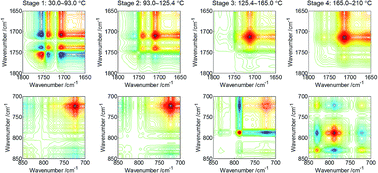Exploring the chemical mechanism of thermal processing of herbal materials by temperature-resolved infrared spectroscopy and two-dimensional correlation analysis
Abstract
Before their medical use, thermal processing methods are frequently utilized to treat the traditional Chinese herbal materials to improve their efficacy or reduce their side effects. Understanding the temperature-dependent chemical reactions of herbal materials is necessary to explore the mechanisms and optimize the procedures of thermal processing. Being a quick, label-free, and nondestructive analytical technique, infrared (IR) spectroscopy can be used to in situ monitor the changes of herbal materials as the temperature increases continually. In this research, the thermal processing of Gardeniae fructus (the ripe fruit of Gardenia jasminoides Ellis) was studied by thermogravimetry-infrared spectroscopy (TG-IR) and heated transmission IR spectroscopy. In summary, the decrease in organic acids (chlorogenic acid, quinic acid, ursolic acid, etc.) is the main reason why thermal processing can reduce the side effects of Gardeniae fructus on intestines and stomach. Stir-baking to yellow at 125–145 °C can reduce the amount of the organic acids remarkably, while most iridoids such as geniposide remain to retain the medical functions of Gardeniae fructus in clearing pathogenic heat, lessening the virulence of pathogens, reducing blood pressure, etc. Stir-baking to brown at 145–165 °C can further reduce the organic acids, but the iridoids also decompose significantly. Stir-baking to scorch at 165–190 °C will destroy most iridoids, but the tannins change the function of Gardeniae fructus into hemostasis.


 Please wait while we load your content...
Please wait while we load your content...